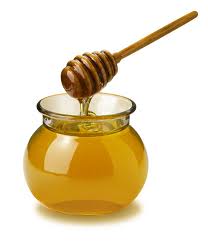Bees are the wonderful social flying insects, closely related to wasps and ants, and are responsible for the production of the much loved gold liquid known as honey. However, not all bees can produce honey. Honey is produced by bees known as honey bees.
There are only eleven known species of honey bees[1] (genus Apis), a small fraction of the 20,000 known species of bees throughout the world, recognised taxonomically as the Superfamily Apoidea. Honeybees of the genus Apis belong to the family Apidae, a sub-group of this superfamily[2] .
Fig. 1. Phylogeny of the genus Apis (vide Engel and Schultz, 1997; Engel, 1998, 1999) where the black bars indicate known major fossils.[3]
a great source of energy booster (carbohydrates) provided by nature itself;
have antioxidant and anti-bacterial properties;
possesses carcinogen-preventing and anti-tumour properties;
a home remedy for many ailments such as cuts, burns, swelling, hangovers, sore throats and sleepiness.[4]
Honey has been used for centuries by mankind not as just a food source but also for healing purposes. So with all those healing benefits, don’t forget to include a little bit of honey in your diet.
Like stamp and coin collecting, beekeeping is also a hobby, which can turn into a professional business if you allow it to. If you are a honey lover, then try your hand at beekeeping. Not sure how to start or what to do, then consider purchasing Beekeeping for Beginners.
Like stamp and coin collecting, beekeeping is also a hobby, which can turn into a professional business if you allow it to. If you are a honey lover, then try your hand at beekeeping. Not sure how to start or what to do, then consider purchasing Beekeeping for Beginners.
Beekeeping for Beginners will provide you with be a great source of valuable information and it is also a great book to read if you don’t want to take up beekeeping.
[1]Subejo Paijo (2010) Apis Species (Honey Bees). Retrieved 15 February 2011, from http://insectspedia.blogspot.com/2010/11/apis-species-honey-bees.html
[2] Agriculture and Consumer Protection (1987) Beekeeping in Asia . Retrieved 15 February 2011, from http://www.fao.org/docrep/x0083e/x0083e02.htm
[3] Michael S. Engel (2006) A Giant Honey Bee from the Middle Miocene of Japan
[4] Health Benefits of Honey (2006) Retrieved 15 Januaray 2011, from http://www.benefits-of-honey.com/health-benefits-of-honey.html




No comments:
Post a Comment